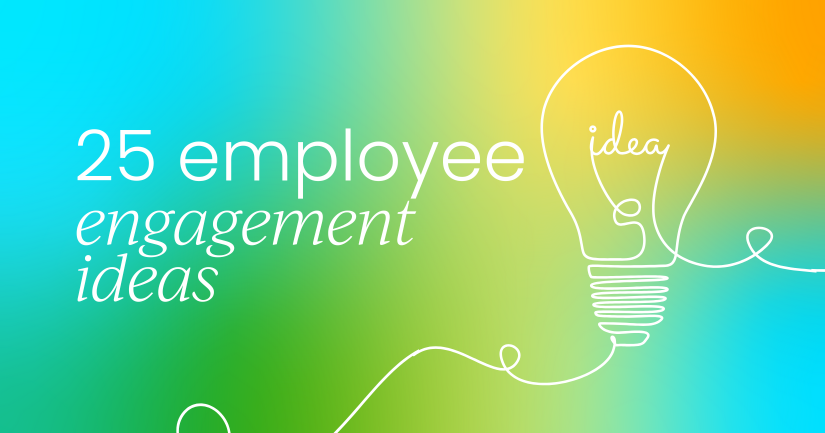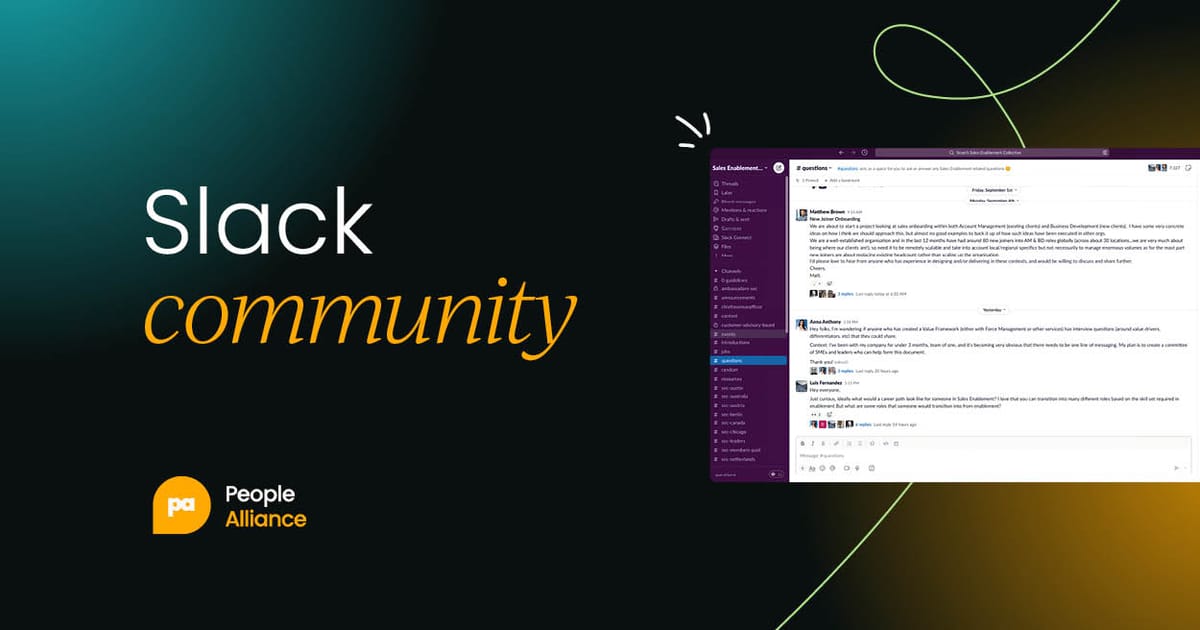Coming up with fun ways to boost morale at work is more than fluff; it’s about keeping people engaged, motivated, and loyal.
And engagement is a very important thing. After all, a Gallup study found that:
- Engagement levels fell globally in 2024, costing the world economy US$438 billion.
- Only 27% of managers worldwide are engaged at work.
- The global GDP could increase by 9% if the workforce was fully engaged.
So, here are a few ideas to get you started.

1. Celebrate (big and small) milestones
Recognizing milestones is a classic, but the way employees react depends on how thoughtfully you execute this idea.
For example, Deloitte found that saying “thank you” can be more effective than other gestures, with 54% of employees opting for verbal appreciation. These gestures aren't expensive but feel deeply personal.
Go beyond the obvious birthdays and anniversaries. Recognize small achievements like “first client closed”, “first 100 customers served”, or “best cross-team collaboration”.
Use visual reminders (digital dashboards, office walls, internal newsletters) to keep recognition in view and rotate who gives the shout-outs so it feels democratic and inclusive.
For example: If it’s a huge milestone, look no further than Hello! Magazine’s party celebrating their 1000th issue, a get-together that included 400 guests (from celebrities to journalists and readers) and a gallery showcase of past issues.
2. Plan team-building activities
Let’s be real, many employees shudder at the words “team-building activity”.
But it doesn’t have to mean awkward icebreakers or forced bonding exercises. Instead, think of experiences that genuinely bring people together – and even better if you can make them laugh while collaborating.
The key is to choose activities that encourage participation without pressure. When employees share a fun experience, they bond better, which can carry over into daily tasks and make teamwork more natural and enjoyable.
For example: An afternoon spent solving clues in an escape room, a friendly outdoor soccer match, or a virtual trivia night can make all the difference. As a more concrete example, the company Let’s Roam created a customized scavenger hunt for naviHealth, where the team spent a day teambuilding and having a blast.
3. Offer flexible work options
This may not sound “fun,” but trust us, employees will love being able to re-shuffle their workday as they please.
If they can work from home a few days a week or set their own hours, they feel valued because it’s clear managers trust them.
This work-life balance lowers stress and burnout while encouraging employees to be accountable.
So, it’d be difficult to deny the boost in morale when employees know they can attend a midday doctor’s appointment without guilt or shift their hours to accommodate family needs.
Example: Airbnb employees have no return-to-work mandate and can work remotely indefinitely. They can also choose from 170 countries to work from for up to 90 days.
4. Create a warm, welcoming space
People spend a lot of their time at work, so make it an inviting, welcoming environment, like offering employees the freedom to personalize their workspaces.
When workshopping this idea, consider both physical and virtual spaces.
For physical offices, you can improve existing lighting, add indoor plants, invest in comfortable furniture, create breakout zones, etc.
For remote teams, encourage “office tours” via video, share snapshots of home setups, host contests for the most creative home workspace, and more.
Example: Google is famously known for the many perks it offers employees, from free food and snacks to fitness facilities and on-site services (like laundromats).
5. Provide interactive opportunities for learning
Career development is more than just climbing the corporate ladder. If employees feel the company supports their professional goals, they’ll become more engaged and motivated.
In fact, McKinsey research found that “employees who left because of a lack of career development and advancement potential”, 65% were because they couldn’t achieve their career goals, 63% because of a lack of progression opportunities, and 59% didn’t feel invested in.
You can do this in many different ways, including by:
- Organizing interactive workshops
- Bringing in guest speakers
- Setting up skill-swap sessions where people teach each other
- Offering live workshops
- Implement peer-to-peer sessions
- Organizing shadowing and job rotations
- Creating micro-learning bursts (5-minute videos)
Each learning path should tie to career goals and show people how the skills they’re acquiring help the company (and themselves) succeed.
Example: Amazon offers upskilling programs like Surge2IT and Career Choice, which provide prepaid tuition for new skills and pathways to higher-paying technical roles.
6. Encourage wellness activities (and regular breaks)
You can’t have teams running on empty and on the path to burning out. Your company culture should encourage regular breaks so people can maintain their focus and creativity – this can be a simple break from the screen, a step outside for fresh air, or even midday yoga classes.
By allowing employees to recharge, you’re showing them their well-being comes first. And, when people feel cared for, not only will they have renewed energy when they go back to work, but they're also more likely to stay with your company and be productive.
Example: Hotel chain Marriott offers several wellness initiatives to its employees, including a TakeCare program that provides physical, mental, and financial support. They also offer paid leave and counseling services.
7. Start a recognition program
We’ve already spoken about saying “thank you” to employees, but there’s no denying that a more formal recognition program can go a long way to show appreciation.
A popular option is peer-to-peer recognition, where employees can nominate their colleagues for monthly or annual awards, or for things like gift cards. You can also have a system in place where employees can shout out their colleagues in team chats.
If people’s hard work is getting recognised and celebrated, you can more easily increase morale.
However, it’s crucial that these initiatives are consistent, sincere, and visible in order to truly be effective.
Example: American Airlines has a program called Nonstop Thanks, where co-workers can recognize their peers, which connects 100,000 staff all around the world. A year after the launch of the initiative, every single people leader had used it to recognize team members.
“Helping people feel appreciated gives them that spark to keep going. It lets them know they are on the right path, that they are being noticed, and people care. When times are tough, it’s even more important to do it.” – Beril McManus, Director of Team Member Engagement at American Airlines
8. Surprise with random acts of fun
The best morale boosts are often the smallest and most unexpected. A spontaneous coffee run or a hand-written thank-you note on their desks – little things that can reinforce a culture of care and attentiveness.
You can use moments like the launch of a major deliverable or the end of the fiscal quarter to plan surprise celebrations, or you can mix it up by dropping in randomly so employees will never quite know what’s coming.
Example: Wegmans and their random appreciation breakfasts, as well as free coffee and free hygiene products for their employees (plus free diapers on changing stations).

9. Unite around purpose
There’s nothing that unites people quite so quickly (and profoundly) as giving back to the community. Many companies offer volunteer opportunities for their employees to help out at food banks, run charity drives, or even provide free paid time off for people to support causes that are dear to them.
This creates a sense of purpose that makes employees feel more connected to the company – and can more easily reinforce internal bonds.
Example: Patagonia’s Environmental Internship Program allows employees to get up to two months paid time off to volunteer for environmental organizations. Recently, “34 employees, 12 stores, and one department took advantage of this program, putting in almost 10,000 volunteer hours for 43 organizations”.
Other fun ways to boost morale at work
- Pilot a shorter week (4-day work week, for example).
- Pick a team sports day for everyone to gather and play a sport or do some fun, physical activities.
- Create a virtual happy hour where people can unwind with a drink and just socialize.
- Run trivia contests or an office bingo game.
- Offer a day off for birthdays.
- Choose one day out of the month when people can bring their pets into work.
- Create themed days (e.g., “dress like a pirate” day).
- Hire a food truck once a week or a month.
- Give away company swag.
In short
These are just some ways to boost morale at work, but we hope our list inspires you and helps you set up something different at your company. These examples can boost employee engagement levels and reduce stress, which, in turn, will give them many reasons to stay and work hard.
Join our growing community of people leaders to connect with your peers, ask all of your burning questions, get inspired by ideas that worked in other companies, and so much more.




 Follow us on LinkedIn
Follow us on LinkedIn



